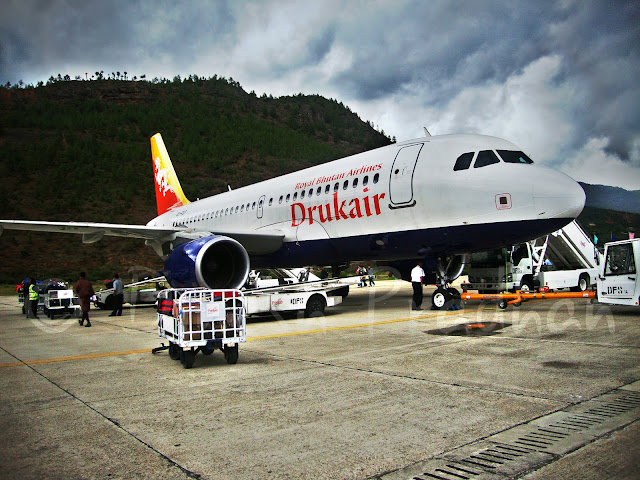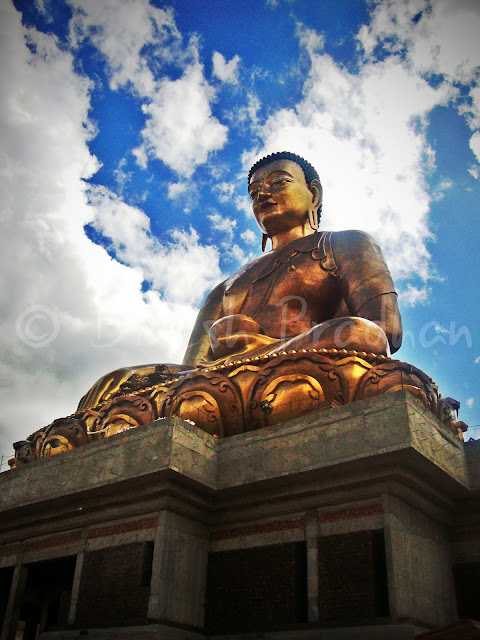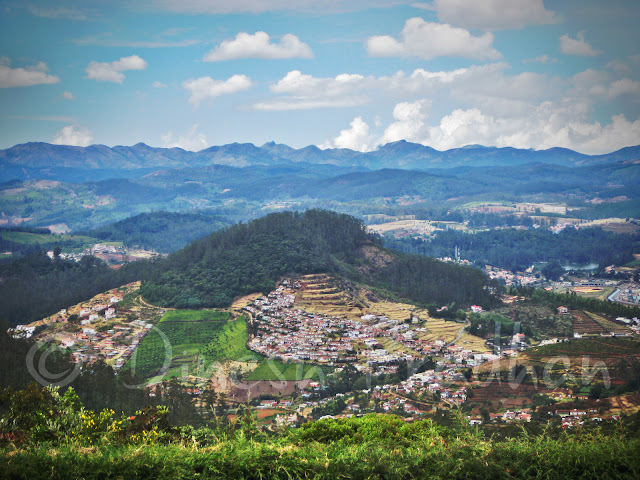I turned from the security check and entered the Departure Holding Area at the Paro Airport
I made my way to an empty seat and kept my bag in an adjacent seat. If I wasn’t in Bhutan, if I were in some airport in India, I’d plug in my iPod earphones and tune out the crowd; but here, as I prepared to leave my home, I wanted to take in as much as possible, all the sights and sounds.
You know that feeling when you’re in a crowd alone, all your senses just get amplified, your eyes are keener, and your ears hear more, you are more aware of your surroundings. Well, of course you wouldn’t be able to do that if you have a phone or a music player with you, I’m talking about just the bare you and the crowd around you.
The same thing happened to me at that time, I was keenly observing my fellow passengers, after all, I was going to fly in the same plane as them, headed for the same destination; it certainly wouldn’t hurt to know who you’re travelling with, would it?
There was an old Indian couple; the lady wrapped in a shawl, the gentleman with a muffler around his neck, a woollen hat on his head. Both of them wore glasses and were reading from the same magazine, and whatever they were reading was making them happy, both of them had warm smiles on their faces.
Then there was this Bhutanese man somewhere in his forties, dressed in a crisp shirt and trousers, and neatly polished shoes; even when he was being casual, he had a certain formality about him. I surmised that he must be a government official headed out for some official business, a conference or a study trip, he definitely wasn’t going on a holiday. How did I know that? Over the years I’ve noticed almost all government officials travelling abroad for work dressed similarly with a briefcase in their hands. And our gentleman had one leather briefcase with him – my guess had to be correct.
Another Bhutanese man was on his phone and just as one call ended, he’d be on another. He was dressed in jeans and a t-shirt, his shades dangling from its neckline. I guessed that he must be a businessman out on, well, business. He could very well have been a contractor or something of that sort, but he definitely had to be from the private sector. Going by his demeanour and the number of seemingly endless calls he made, he seemed to be a fairly successful one. Here was someone who had struck big.
A group of youngsters were standing near the window, looking out at the runway. They posed and took pictures. My guess? They had to be students headed to college definitely, and I bet this was their first flight ever. They were all dressed in stonewashed jeans, one of which was precariously hanging on to its owner’s behind, and t-shirts with captions on them. They had those colourful shoes – green, red, orange – and those were huge shoes, much huger than their feet.
You know the thing they say about young people – all of them aspire to be different from the rest, and yet, they all dress the same. That fact aside, these kids were embarking on an exciting phase in their lives, that which is about to come to an end for me. I was leaving for college for the last time; a tinge of poignancy washed over me as I thought about that.
The Drukair staff announced departure and everyone rose from their seats and stood in single file. I saw the boys giving way to an elderly gentleman behind them to stand before them. They might be dressed in the hippest clothes but they still had Bhutanese values intact within them. Rather heart-warming.
As the line moved forward slowly and silently I noticed something missing – there was no jostling, no hurry, no commotion – it felt as if the Bhutanese passengers were moving hesitatingly away from home, and the foreigners were silently making the final few steps away from this magical land.
With my boarding pass checked I was out on the tarmac. I took one last 360 degree look around the Paro Valley
I found my seat, put my bag in the overhead cabin, and exchanged pleasantries with the gentleman seated next to me. He was a teacher in a school in eastern Bhutan Bhutan
I looked out of the window as the plane taxied down the runway; I didn’t want to look at the safety demonstration that was going on. A few minutes later the plane’s wheels left the tarmac. The thing about flying from Paro – within five minutes of takeoff one can see the Greater Himlayan range of mountains, amongst them Jomolhari shining closest and brightest. One just has to hope for clear skies.
The college kids were taking pictures of everything they could see out of their windows, the businessman pounded hard and fast on his laptop, the government official was chatting animatedly with another man who also looked like he was in the government, the elderly Indian lady was lying with her head on her husband’s shoulder, both of them wrapped in one shawl.
As we skirted among the clouds, the food and beverages came and went. I made small talk with the teacher, read the Tashi Delek in-flight magazine, made a trip to the lavatory, and prepared for landing.
It was a smooth landing. The plane slowed down and taxied to its parking bay. As soon as the plane stopped, the Indian passengers on board and a few Bhutanese got up and started unloading their luggage from the overhead cabins. I noticed the elderly Indian couple and a majority of the Bhutanese just sitting calmly, waiting for the plane doors to open. The doors finally opened and the passengers started moving out slowly, with me bringing up the rear.
Once inside the airport terminal, a sudden sense of hurry had engulfed everyone. My fellow passengers were frantically getting through Immigration, picking up their luggage from the baggage claim, and moving out pushing their luggage trolleys at almost a run.
I managed to chat with the group of boys and learnt that they were indeed headed to college, and I wished them luck at that. I retrieved the elderly couple’s luggage from the baggage claim and helped them arrange their trolley. I saw the government official walking towards the Duty-free to check out their liquor range. The businessman was on his phone again, walking fast towards the exit, tugging his small suitcase behind him. The teacher wished me luck and a safe journey, and I wished the same back to him, and he was on his way out too.
I had a long wait till my next flight so I sauntered along at my own pace, taking time to check out the Duty-free Shop, stopping at the coffee-shop for a chilled Mocha, and after a few phone calls, I was outside.
I walked into the Departure Holding Area at Paro Airport two hours ago, spent the next two hours amidst complete strangers and here I was, alone in the crowd again. In that two hours, being with that group of strangers seemed strangely comforting. We shared the same space, breathed the same air, and were part of each other’s lives for that brief time we spent together. And just as we all met without so much as a “Hello”, we parted ways without even a “Good Bye”.
Isn’t life that way too? We all meet in life, some as family, and some as friends, others as mere acquaintances, and a large number as strangers. Yet, we all part from each other, we go our own ways, and what better example than the final goodbye itself, when we leave everyone behind and move on into the unknown. We meet only to depart, and only with a select few, we depart only to meet again.
I entered the domestic terminal for my next flight and checked in. With the boarding pass in hand I made my way to the boarding gate, bought myself a newspaper, plugged in my earphones and tuned out the crowd.







































































